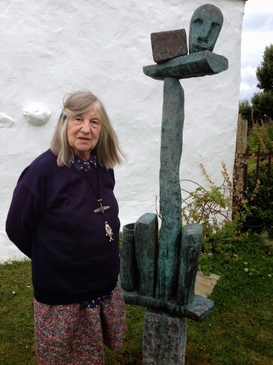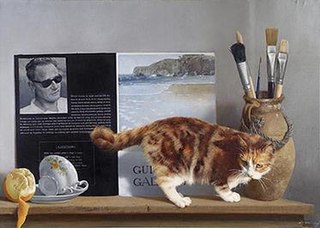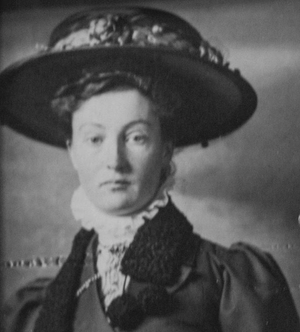
Camille Souter was a British-born Irish abstract and landscape artist. She lived and worked on Achill Island and was a Saoi of Aosdána.
Paul Henry was an Irish artist noted for depicting the West of Ireland landscape in a spare Post-Impressionist style.

Sir John Lavery was an Irish painter best known for his portraits and wartime depictions.

Sir Michael Craig-Martin is an Irish-born contemporary conceptual artist and painter. He is known for fostering and adopting the Young British Artists, many of whom he taught, and for his conceptual artwork, An Oak Tree. He is an emeritus Professor of Fine Art at Goldsmiths. His memoir and advice for the aspiring artist, On Being An Artist, was published by London-based publisher Art / Books in April 2015.

Clitheroe Royal Grammar School is a co-educational grammar school in the town of Clitheroe in Lancashire, England, formerly an all-boys school. It was founded in 1554 as "The Free Grammar School of King Philip and Queen Mary" "for the education, instruction and learning of boys and young men in grammar; to be and to continue for ever."
Shahin Afrassiabi is an artist and author who has been based in London, Berlin and Spain.

Rowan Fergus Meredith Gillespie is an Irish bronze casting sculptor of international renown. Born in Dublin to Irish parents, Gillespie spent his formative years in Cyprus.
Patrick Hickey was an Irish printmaker, painter, artist and architect who founded the Graphic Studio Dublin in 1960.
Henry Allan was an Irish painter.

William Ashford was an English painter who worked exclusively in Ireland, where he lived from the age of 18, having initially gone there to take up a post with the Ordnance Office. His earliest paintings were flower pieces and still lifes, but from 1772 he exhibited landscapes. He became president of the Irish Society of Artists in 1813, and was first elected President of the Royal Hibernian Academy. His works include a set of views in and around Mount Merrion, painted for the 4th Earl FitzWilliam.

Stella Steyn was an Irish artist.
Patrick Swift (1927–1983) was an Irish painter who worked in Dublin, London and the Algarve, Portugal.
Arthur Armstrong was a painter from Carrickfergus, County Antrim, Northern Ireland, who often worked in a Cubist style and produced landscape and still-life works.

Patrick Anthony Hennessy RHA was an Irish realist painter. He was known for his highly finished still lifes, landscapes and trompe l'oeil paintings. The hallmark of his style was his carefully observed realism and his highly finished surfaces, the result of a virtuoso painting technique. He was brought up in Arbroath by his mother and step-father, his father having been killed during World War One. He attended Dundee School of Art where he met his lifelong companion, the painter Henry (Harry) Robertson Craig. Two of his paintings were accepted in 1939 at the Royal Scottish Academy for their Annual Exhibition. For the next 29 years he lived in Ireland with extended trips abroad. He was elected a member of the Royal Hibernian Academy in 1949. The Hendriks Gallery in Dublin and the Guildhall Galleries in Chicago were the main outlets for his work. In the late 1960s he moved permanently to Tangier and then, after suffering ill health, to the Algarve. He died in London.
Tim Woolcock is a Modern British painter painting in the tradition of the 1950s. His works have been exhibited nationally and internationally and are in private and public collections worldwide. In 2009 the Office of Public Works in Dublin, Ireland acquired one of his artworks for the Department of Arts, Heritage and the Gaeltacht.

James Le Jeune RHA was an Irish-Canadian artist who painted portraits, landscapes, and seascapes.

Mary Swanzy HRHA was an Irish landscape and genre artist. Noted for her eclectic style, she painted in many styles including cubism, futurism, fauvism, and orphism, she was one of Ireland's first abstract painters.

Simon Fujiwara is a British artist.

Joseph Parry (1756–1826) was a British painter and engraver. He was popularly known by his contemporaries as Old Parry to distinguish him from his sons James Parry and David Henry Parry, also artists.
Kenneth Webb FRSA is a British artist and founder of the Irish School of Landscape Painting. Known chiefly for his richly coloured impressionist landscapes, he has also produced figurative and abstract work over the course of his career which spans seven decades. He was Head of Painting at the Ulster College of Art from 1953 to 1960.












